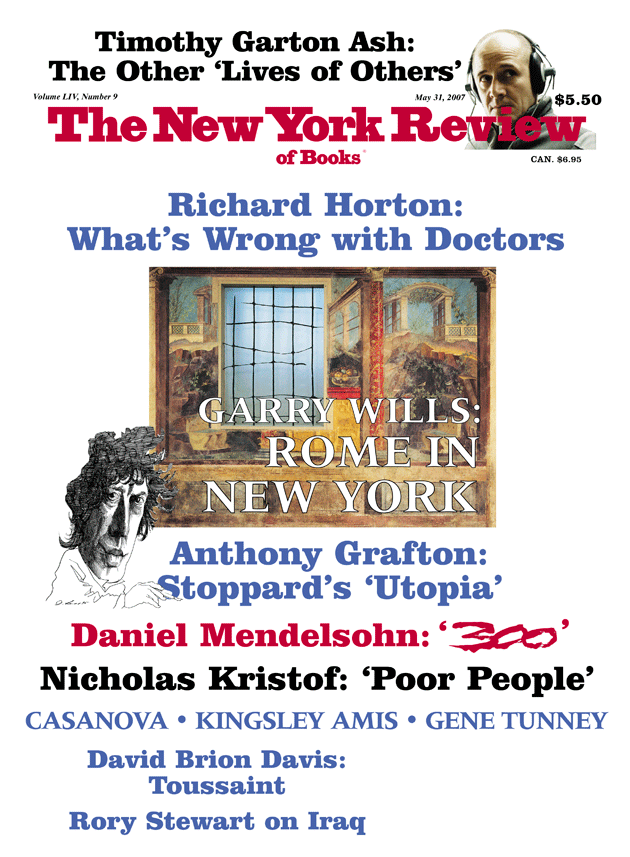In response to:
Scandals of Higher Education from the March 29, 2007 issue
To the Editors:
It is extraordinary that Andrew Delbanco [“Scandals of Higher Education,” NYR, March 29] only refers in passing perhaps once to what is arguably the most fundamental reason why the well-to-do tend to clog the admissions system in the better institutions. Of course, apparently none of the titles reviewed do either. The point is that, in addition to all the special situations (e.g., buying a student’s admission by giving the library), the systemic issue is that the wealthy commence the de-leveling of the field at age, say, three because they inject their children into extremely good (and competitive) school environments from the very beginning. There are, of course, exceptions but most objectively bright students from disadvantaged backgrounds are DOA by the time they reach sixth grade. They are not going to receive the attention, the advanced placement courses in a quality school, etc., that shape the college admissions process. This is why it is going to be so difficult to level the field.
J.J. Stevenson III
Rye, New York
To the Editors:
As Princeton University’s media relations manager, I am writing to express the university’s surprise and deep disappointment that Andrew Delbanco mischaracterized our initiatives to help low-income students in his March 29 piece “Scandals of Higher Education.” We appreciate the attention being given to the important topic of accessibility for low-income students, but the article was incorrect in stating that Princeton “most recently” has undertaken initiatives in this area relative to our peers, and then it further neglected to touch upon the most significant efforts.
Princeton’s widely publicized—and often reported—groundbreaking “no-loan” policy was the first full-scale measure to address costs for low-income students. We set the standard that our peers have sought to follow, and Stanford’s financial aid director was quoted in a paper in February saying that Princeton “has a legendary aid program that we simply can’t match yet.” Our program that provides grants to meet financial need, instead of loans, allows all students qualifying for financial aid to graduate debt-free.
Princeton in 1998 first enhanced its financial aid program to reduce the financial burden for low- and middle-income students. This first affected low-income students in the class of 2002 such that loans were eliminated for families earning less than $46,500 and reduced for those earning between $46,500 and $66,500.
Princeton announced its no-loan program for all financial aid recipients in February 2001, before our peers. Freshmen entering in 2001 and graduating in 2005 were the first to benefit from no loans their entire four years.
Cass Cliatt
Media Relations Manager
Princeton University
Princeton, New Jersey
Andrew Delbanco replies:
Of course, Mr. Stevenson is right that “most objectively bright students from disadvantaged backgrounds” fall behind when they are very young. That’s all the more reason that colleges should work harder to find and support those who don’t.
As for Princeton, I should have noted that it was the first of its peer institutions to replace loans with grants. I should point out, however, that Princeton’s own former president William Bowen does not think this change of policy goes far enough. “It is fine to be more generous” to financial aid recipients, he writes in Equity and Excellence in American Higher Education (University of Virginia Press, 2005, p. 183), but “giving a boost in admissions” to students from deprived backgrounds is likely to be “more effective in altering the socioeconomic composition of classes than improving financial aid offers to those who are admitted.” Still, Mr. Cliatt is right that my phrase “most recently” was poorly chosen; it was meant to refer only to Princeton’s most recent action, namely the freeze on tuition (accompanied by a sharp rise in the price of room and board) announced in January 2007. I note that Mr. Cliatt makes no comment on that action, whose efficacy in making Princeton more accessible to low-income students is likely to be minimal.
This Issue
May 31, 2007


